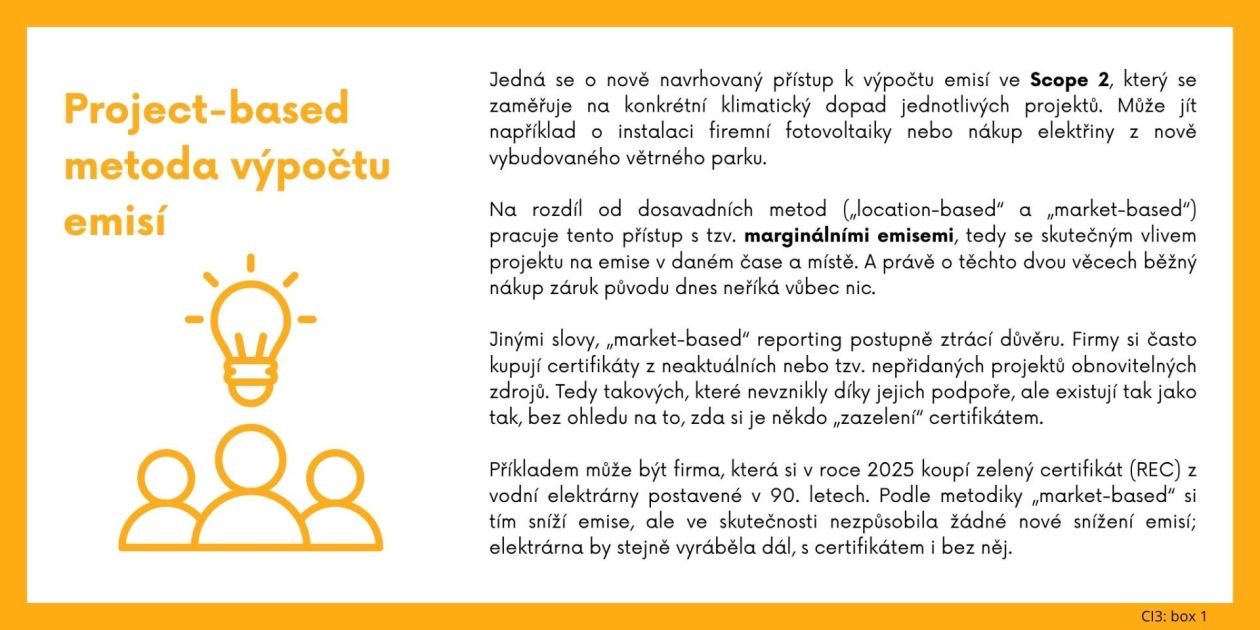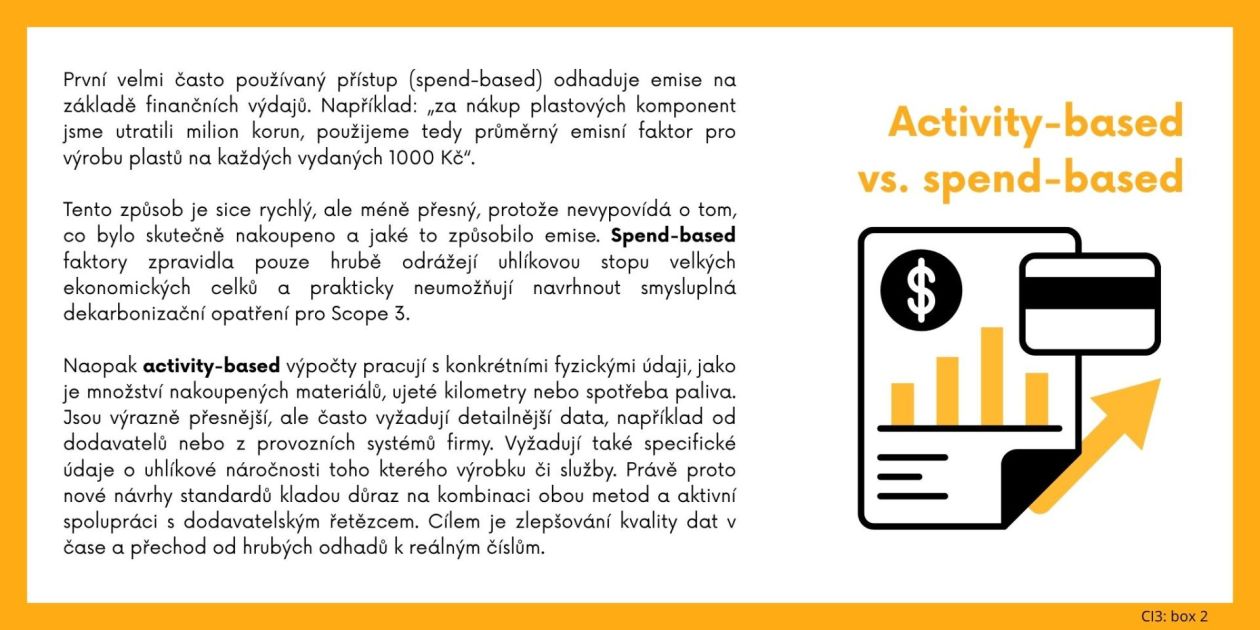
The Biggest Revision of the GHG Protocol in 20 Years: What to Expect and How to Prepare
The GHG Protocol, the cornerstone of corporate greenhouse gas emissions measurement, is undergoing its first major revision in over twenty years. Not only are the methodologies changing, but also the very perception of corporate responsibility for emissions. What’s changing—and why should Czech companies start paying attention?

The GHG Protocol was created at a time when the world looked fundamentally different from today. It was 2001—the same year hijacked planes struck New York’s Twin Towers. The global agenda was focused on terrorism, not climate change. In expert circles, people spoke more about the "ecological footprint" than the "carbon footprint," and the idea of sustainability was mostly confined to academics and environmental enthusiasts. The emerging GHG Protocol methodology was primarily designed to help companies map their direct greenhouse gas (GHG) emissions and to provide a framework for voluntary reporting. But the world has changed dramatically since then. GHG emissions have become central to global strategies, and non-financial reporting is now a mandatory part of doing business in many sectors.
So when the World Resources Institute and the World Business Council for Sustainable Development introduced the first version of the GHG Protocol in 2001, it marked a major milestone. For the first time, companies received a comprehensive guide on how to calculate their carbon footprint—primarily direct emissions from their operations and energy consumption. They could also choose to voluntarily report indirect emissions from their value chains, business travel, and other activities. Climate change was just beginning to enter public debate, and emissions reporting remained a voluntary activity for the more “enlightened” companies. When we (then still operating under CI2, o.p.s.) started helping companies and municipalities in the Czech Republic and Slovakia with carbon footprint reporting in 2014–2015, it was usually subsidiaries or suppliers of progressive Scandinavian firms.
Today, the landscape is entirely different. The climate crisis ranks among the greatest global threats and is now considered one of the transgressed planetary boundaries.[1] ESG reporting requirements are tightening rapidly, and even companies that have never heard of a carbon footprint before are now required to report their emissions. These data are increasingly subject to third-party assurance, much like financial statements. That’s why the GHG Protocol is undergoing a major revision. For the first time in over twenty years, key components of the standard are being rewritten to reflect today’s realities and the demands of regulatory frameworks such as the CSRD.[2]
A Revision in Response to New Realities
The GHG Protocol revision is a direct response to major shifts in the business environment. In the past, the main focus was whether companies were measuring their emissions. Today, the emphasis has shifted to how accurately and transparently those emissions are reported. European directives like the CSRD and ESRS[3] now require mandatory reporting of Scope 3 emissions[4] and demand auditability, transparent methodologies, and high data quality.
At the same time, there is growing pressure to reduce the administrative burden on companies and a political shift away from green policies. Increasingly, we hear calls to simplify regulation in the name of European competitiveness and to align climate ambitions with economic growth—so-called "Dragi Report" logic.[5] Whether this balance is even possible is a separate debate. For now, let’s focus on the proposed changes to the GHG Protocol.
The revision covers all three main areas of the GHG Protocol: the Corporate Standard, the Scope 2 Guidance, and the Scope 3 Standard. The goals are greater clarity, methodological accuracy, and better alignment with new regulatory frameworks. For Scope 2, discussions include adjustments to rules for reporting emissions from purchased electricity, particularly refining the "market-based" approach and introducing new principles such as temporal and geographic matching. A new project-based accounting method, based on marginal emissions, is also being considered (see Box 1). Other potential updates include regional restrictions and certificate age for renewable energy (RECs), as well as more precise rules for reporting electricity from self-generated renewable sources, battery storage, or from the regular grid.

For Scope 3, greater emphasis is expected on the materiality of individual emission categories, the transparency of data used, and the practical feasibility for companies that are now required to collect this data. The introduction of a significance threshold is also being considered—this would allow companies to exclude emissions that represent only a small portion (e.g., just a few percent) of their total carbon footprint from reporting. The proposed threshold is 5%. However, the exclusion of any category would need to be supported by a verifiable calculation. The revision is also expected to include a clearer distinction between spend-based and activity-based calculation methods, as well as a stronger emphasis on active supplier engagement and continuous improvement of data quality over time (see Box 2).

What does this mean for Czech companies?
The outcome should be a framework that is robust, comparable across companies and sectors, and at the same time practical to implement. We consider this a key requirement. The updated GHG Protocol standards are expected to be published in 2027, but it is already clear they will impact thousands of companies worldwide—including those in the Czech Republic.
For businesses that are just beginning their reporting journey—whether due to pressure from a major client or a financing bank—it may be beneficial to start preparing early. Companies can begin by clarifying internal responsibilities, setting up data collection processes, or identifying key emission areas within Scope 3. Those wanting to be ready in time can take advantage of existing tools, seek support from expert organizations (such as CI3), or begin working with the current version of the standards today.
The earlier the preparation, the less stress and fewer unpleasant surprises during audits or when facing the risk of losing business opportunities.
Author of the article: Viktor Třebický
Sources and notes:
[1] “Planetary Boundaries,” Stockholm Resilience Centre.
[2] CSRD = Corporate Sustainability Reporting Directive.
[3] ESRS = European Sustainability Reporting Standards.
[4] Scope 1, 2, 3 = the standard classification of emissions under the GHG Protocol:
Scope 1 = direct emissions,
Scope 2 = emissions from purchased energy,
Scope 3 = indirect emissions in the value chain.
[5] Draghi, M. (2024). Report on the Future of EU Competitiveness, European Commission.
[6] GHG Protocol (2024). Corporate Standard – Standard Development Plan. Available at: https://ghgprotocol.org/sites/default/files/2025-01/CS-SDP-20241220.pdf
